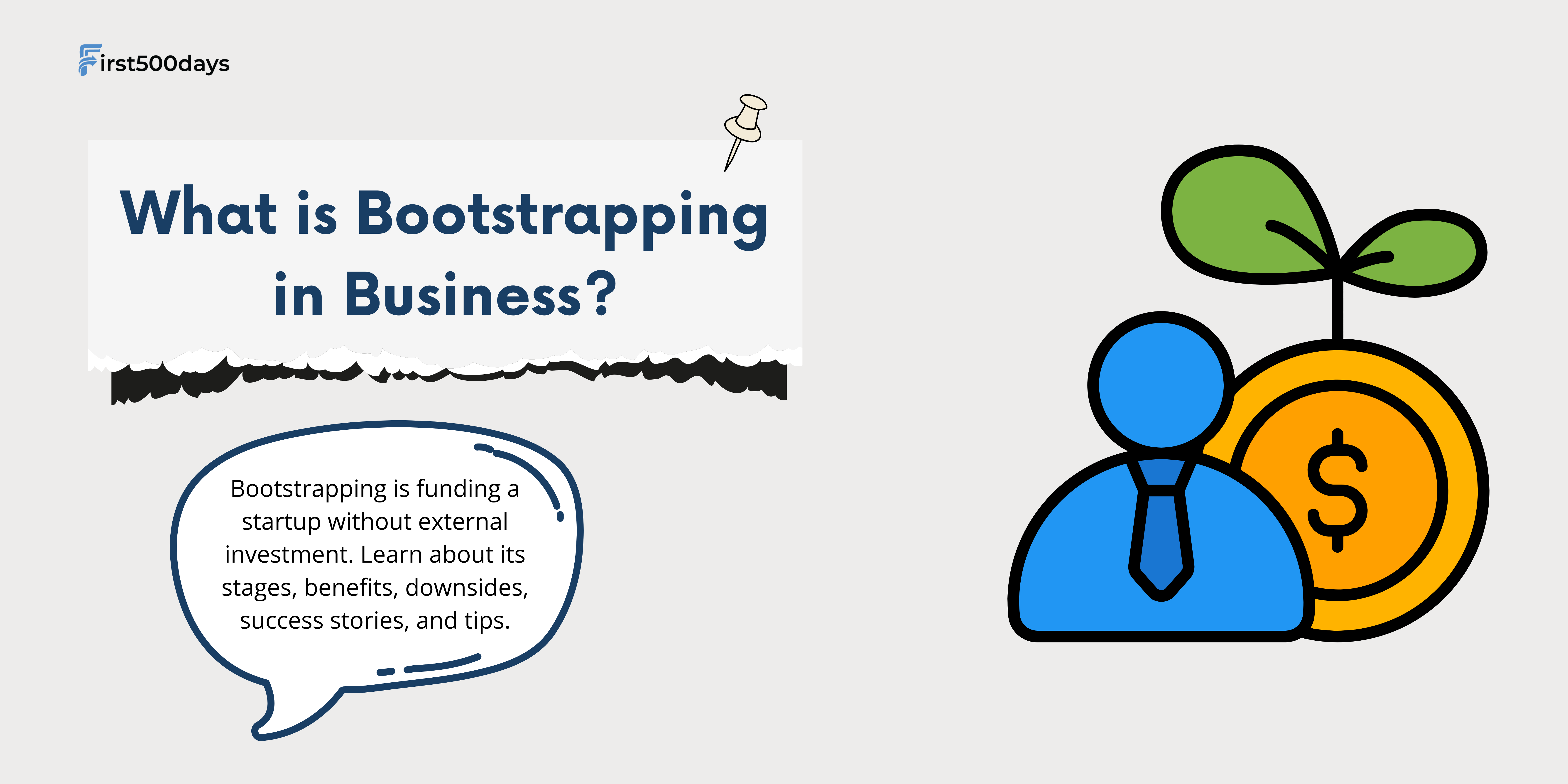Bootstrapping is funding a startup without external investment. Learn about its stages, benefits, downsides, success stories, and tips.
The startup ecosystem is growing, and we see more businesses solving unique problems and making our lives easier. However, the focus often shifts to labels like “unicorn,” making many believe that only VC-backed startups grow fast.
While this can be true, it’s not always the case. Many indie hackers bootstrap SaaS businesses to $300K–$400K ARR, while some VC-backed products with $2M–$3M in funding struggle to monetize effectively.
As the world moves towards solopreneurship, we at First500days advocate bootstrapping and building small businesses that solve real problems. In this article, we share insights on why bootstrapping can be better, its drawbacks, benefits, and stages.
How Does Bootstrapping Work?
Bootstrapping means relying on your own resources instead of seeking investors or taking loans. It involves:
✅ Using savings, revenue, or support from friends & family.
✅ Avoiding debt while keeping 100% ownership of your business.
✅ Growing slowly by reinvesting profits rather than paying yourself a large salary.
✅ Taking on multiple roles—marketer, salesperson, and accountant—until you can afford a team.
The Stages of Bootstrapping
1️⃣ Sweat Equity Phase
Founders handle everything themselves—marketing, sales, and product development—with minimal expenses.
2️⃣ Break-Even Phase
The business earns just enough to cover costs but isn’t making big profits yet. Profits are reinvested to sustain growth.
3️⃣ Scaling Phase
The business is profitable and can afford hiring, better tools, or expanding marketing—all without external funding.
The Benefits of Bootstrapping
✅ Ownership & Control – No investors means you call the shots.
✅ Avoiding Debt – No loans or equity dilution, reducing financial stress.
✅ Resourcefulness – Limited funds force smart, creative decision-making.
✅ Profit-Driven Approach – Bootstrapped businesses focus on early revenue & sustainability.
The Downsides of Bootstrapping
❌ Limited Resources – Growth is slower without large capital for marketing or hiring.
❌ Financial Risk – Your personal savings are at stake.
❌ Burnout – Handling multiple roles alone can be exhausting.
Examples of Successful Bootstrapped Businesses
- Mailchimp – Started without external funding and became a leader in email marketing.
- Basecamp – Built and scaled independently while remaining highly profitable.
- GitHub – Bootstrapped before Microsoft acquired it for $7.5B.
When to Consider Bootstrapping
Bootstrapping isn’t for everyone, but it works best when:
✔️ You Want Full Control – If 100% ownership is a priority.
✔️ Your Business Has Low Startup Costs – Ideal for service-based or digital businesses.
✔️ You Can Grow Gradually – If you’re okay with steady, organic growth.
Bootstrapping Tips for Entrepreneurs
- Start Small – Focus on one core product/service first.
- Reinvest Profits – Grow sustainably without external cash.
- Cut Costs – Use free tools, work remotely, and negotiate deals.
- Leverage Sweat Equity – Be ready to do the work yourself in the early days.
That’s a Wrap
Bootstrapping allows founders to grow independently while focusing on profitability and sustainability. It’s a strategic decision that works best for those who prioritize ownership and controlled growth.
At First500days, we support entrepreneurs in building real businesses with lasting impact. Whether you bootstrap or seek investment, the goal remains the same—solving problems and driving revenue.
If you’re looking for expert insights, join our startup community and get connected with experienced founders & investors!


